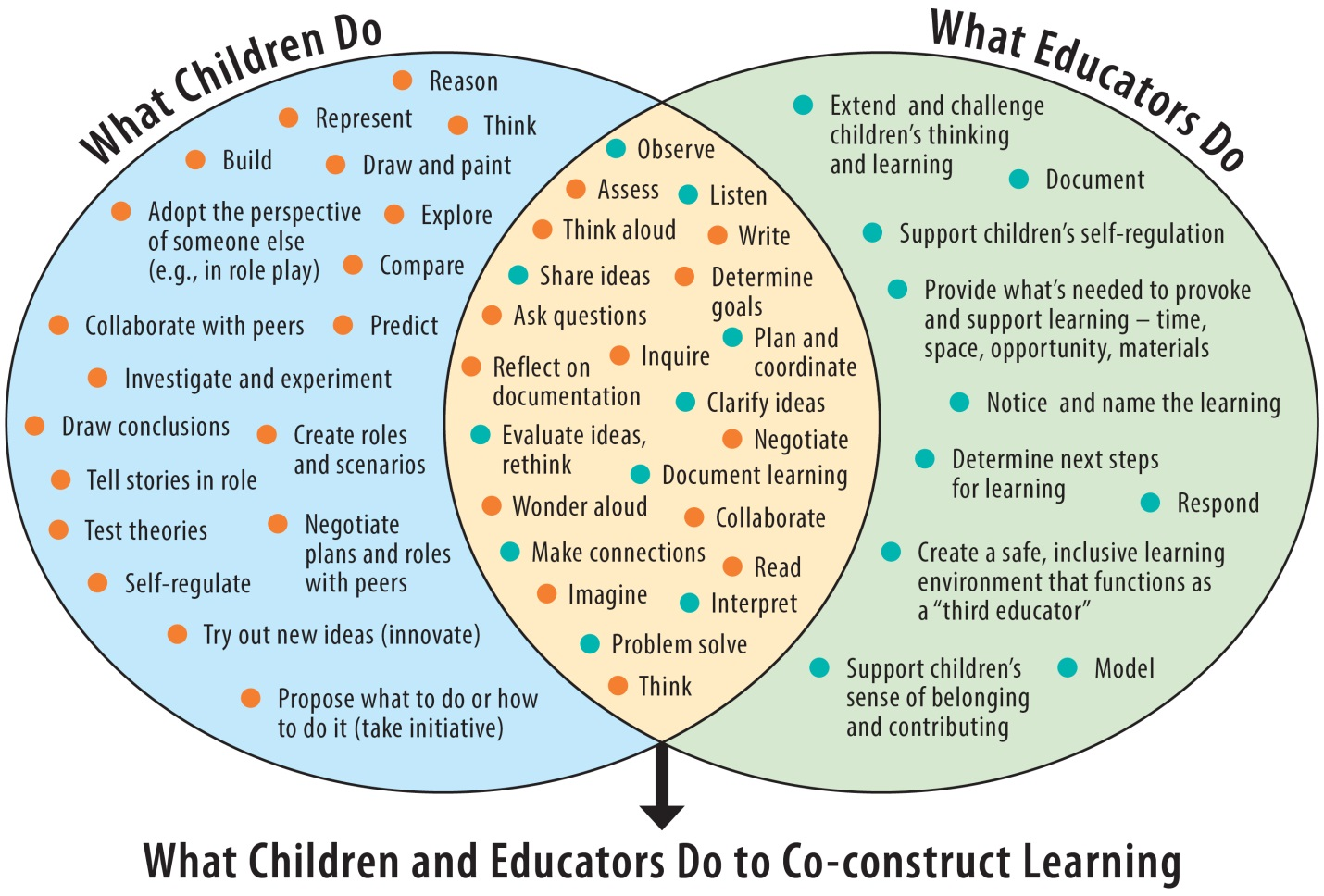How much guidance should an educator provide during inquiry-based learning? by Sara de Jonge
Hi bloggers!
When using inquiry-based learning in Kindergarten, I always wonder if I am providing too much support or not helping enough, if the questions that I ask are appropriate to the learner, and if I am providing children with the right tools for exploration. Through all of my research, I have found that the guidance that a teacher provides usually comes naturally and if you are trying your best and truly care about and have confidence in the children, you are most likely doing a great job.
Here are some tips from the Kindergarten curriculum about how to successfully guide students through inquiry:
An interesting article that I found focuses on using inquiry in science in
Kindergarten classrooms. It suggests that in order for children to reach
their potential as young scientists, they need the support of knowledgeable and
skillful adults. In early education settings, children benefit by having
teachers who intentionally structure and scaffold explorations, integrate
hands-on and minds-on experiences, and interact with children in ways that
support reflection, theory making, and understanding.
Here are some helpful tips to set up your science area in a way that supports and encourages inquiry-based learning:
1. Ensure you provide the most space possible for children to move around. For example, at the water table, is there enough space for several children to move around it and explore comfortably?
2. Do the areas include accessible storage for exploration materials?
3. Are there photographs displayed at children’s eye level related to what they are exploring? For example, if they are learning about water, are there photos of waterfalls, puddles, etc.?
When using inquiry-based learning in Kindergarten, I always wonder if I am providing too much support or not helping enough, if the questions that I ask are appropriate to the learner, and if I am providing children with the right tools for exploration. Through all of my research, I have found that the guidance that a teacher provides usually comes naturally and if you are trying your best and truly care about and have confidence in the children, you are most likely doing a great job.
Here are some tips from the Kindergarten curriculum about how to successfully guide students through inquiry:
- Focus on the children’s strengths to help them develop a sense of their capabilities and potential (a “growth mindset”)
- Provide opportunities to develop the skills, strategies, and attitudes connected with the Kindergarten program
- Encourage children to try new activities
- Co-construct learning and act as a co-learner with the children
- Scaffold learning for the children
- Support children’s inquiries by providing materials (including cultural materials representing the classroom community) that change as the children’s needs and wonderings change
- Co-construct the learning environment with the children.
 |
| https://www.ontario.ca/document/kindergarten-program-2016/play-based-learning-culture-inquiry This graphic depicts the interdependent roles of children and educators in play-based learning. It identifies the various ways in which children and educators engage throughout the day, showing their roles in the co-construction of learning. |
Here are some helpful tips to set up your science area in a way that supports and encourages inquiry-based learning:
1. Ensure you provide the most space possible for children to move around. For example, at the water table, is there enough space for several children to move around it and explore comfortably?
2. Do the areas include accessible storage for exploration materials?
3. Are there photographs displayed at children’s eye level related to what they are exploring? For example, if they are learning about water, are there photos of waterfalls, puddles, etc.?
The article also discusses what types of questions
help to stimulate children’s inquiry:
1. Questions that support describing observations:
These questions encourage close observation and collection of evidence.
2. Questions that support explaining procedures:
These questions ask children to communicate what they did and how they did it.
3. Questions that support making predictions:
These invite children to speculate about what might happen based on their previous experiences and/or try an investigation they haven't tried yet.
4. Questions that spark children's reflection:
After children's direct explorations, teachers ask questions that stimulate reflection. Learning goes form hands-on to minds-on when the teacher encourages children to think about the evidence they have collected over time and generate their own theories about why things happen the way they do.
1. Questions that support describing observations:
These questions encourage close observation and collection of evidence.
2. Questions that support explaining procedures:
These questions ask children to communicate what they did and how they did it.
3. Questions that support making predictions:
These invite children to speculate about what might happen based on their previous experiences and/or try an investigation they haven't tried yet.
4. Questions that spark children's reflection:
After children's direct explorations, teachers ask questions that stimulate reflection. Learning goes form hands-on to minds-on when the teacher encourages children to think about the evidence they have collected over time and generate their own theories about why things happen the way they do.
References
Hoisington, C., Winokur, K., Clark-Chiarelli, N. (2014). Promoting children's science inquiry and learning through water investigations. National Association for the Education of Young Children. Retrieved from http://www.naeyc.org/yc/files/yc/file/201409/YC0914_Promoting_Science_Inquiry_Hoisington.pdf
Ministry of Education. (2016). The kindergarten program. Retrieved from https://files.ontario.ca/books/edu_the_kindergarten_program_english_aoda_web_oct7.pdf


Comments
Post a Comment